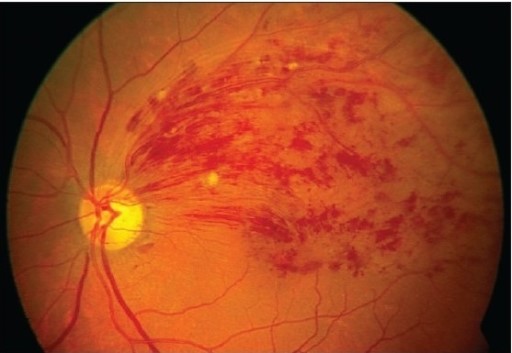
What is BRVO?
Branch retinal vein occlusion is a blockage of the small veins that carry blood away from the retina. The retina is the layer of tissue at the back of the inner eye that converts light images to nerve signals and sends them to the brain.
Causes of BRVO
BRVO occurs when there is a blockage of smaller veins (branch veins or BRVO) in the retina that often occurs in places where retinal arteries that have been thickened or hardened by atherosclerosis cross over and place pressure on a retinal vein.
Common risk factors for BRVO include:
- Uncontrolled high blood pressure
- Diabetes
- High Cholesterol
- Being overweight or obese
- Cardiovascular disease
- Glaucoma
- In younger patients who suffer BRVO, an abnormal tendency to develop blood clotting is also possible.
How is BRVO treated?
You may need treatment to prevent another blockage from forming in the same or the other eye.
- It’s important to manage diabetes, high blood pressure, and high cholesterol levels.
- Some people may need to take aspirin or other blood thinners.
Treatment for the complications of retinal vein occlusion may include:
- Focal laser treatment, if macular edema is present.
- Injections of anti-vascular endothelial growth factor (anti-VEGF) drugs into the eye. These drugs may block the growth of new blood vessels that can cause glaucoma. This treatment is still being studied.
- Laser treatment to prevent the growth of new, abnormal blood vessels that leads to glaucoma.
How do you prevent BRVO?
Retinal vein occlusion is a sign of a general blood vessel (vascular) disease. Measures used to prevent other blood vessel diseases may decrease the risk of retinal vein occlusion.
These measures include:
- Eating a low-fat diet
- Controlling your Diabetes, Hypertension and High Cholesterol
- Getting regular exercise
- Maintaining an ideal weight
- Not smoking

